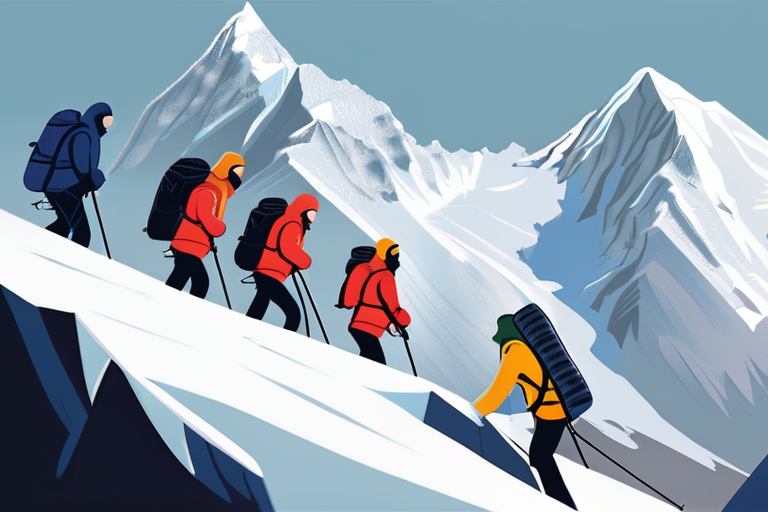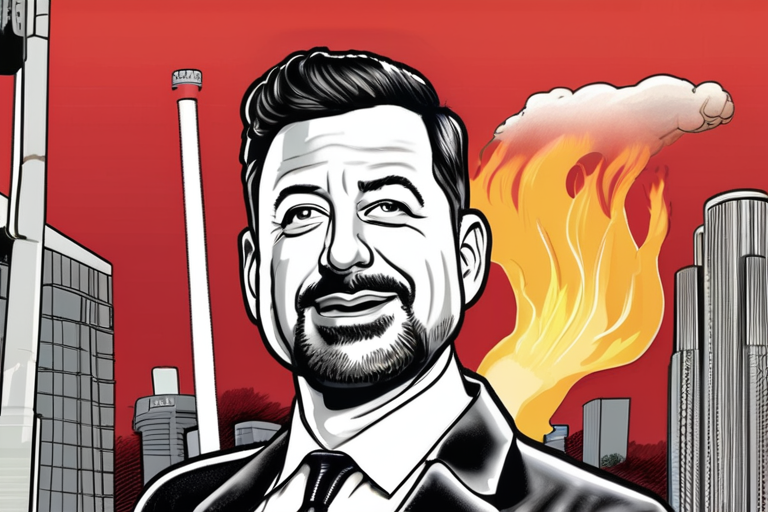Rescue on the Roof of the World: Hundreds of Hikers Saved from Mount Everest's Fury
As the snowstorm raged on, the winds howled like a chorus of banshees, threatening to rip apart the fragile tents that sheltered hundreds of hikers on the slopes of Mount Everest. The storm was so severe that it cut off access to the high-altitude campsites, leaving 900 stranded adventurers at the mercy of the elements.
But in a remarkable display of human resilience and technological prowess, rescue teams battled against the odds to reach those trapped by the snow. Their efforts paid off as, one by one, the hikers began to trickle down from the mountain, some with hypothermia but all alive thanks to the bravery and expertise of their rescuers.
The drama unfolded on the Chinese side of Mount Everest, the world's highest peak, straddling the border with Nepal. The storm that struck on Saturday night was so intense that it forced the closure of the scenic area around the mountain. But even as the snow piled up, rescue teams sprang into action, deploying teams with food, medicine, heating and oxygen supplies to reach those in need.
"We were trapped for hours," said one hiker, who wished to remain anonymous. "The winds were so strong that we couldn't even open our tent flaps. But then we heard the sound of oxen and horses making their way up the mountain, carrying rescue teams with warm blankets and hot tea."
As the rescuers made their way up the treacherous slopes, they encountered some of the most extreme conditions on Earth. The winds were so strong that they threatened to blow away even the sturdiest tents, while the temperatures plummeted to -20°C (-4°F). But despite these challenges, the rescue teams persevered, using their knowledge of the mountain and its weather patterns to navigate the treacherous terrain.
"It was a logistical nightmare," said Wang Xiaoming, a member of the rescue team. "But we knew that every minute counted. We had to get those hikers down from the mountain before it was too late."
Thanks to the bravery and expertise of the rescue teams, all 900 stranded hikers were eventually brought to safety. While some suffered from hypothermia, none lost their lives in the ordeal.
The rescue operation was a testament to the power of human ingenuity and teamwork in the face of adversity. But it also highlighted the risks and challenges faced by those who venture onto the world's highest peaks. As one hiker noted, "Mount Everest is not just a mountain – it's a force of nature that demands respect."
The Science Behind the Rescue
So what made this rescue operation so remarkable? The answer lies in the cutting-edge technology used by the rescue teams to navigate the treacherous terrain and reach those stranded on the mountain.
One key tool was the use of drones equipped with thermal imaging cameras, which allowed rescuers to pinpoint the locations of hikers in real-time. This enabled them to deploy teams with food, medicine, and other essential supplies to exactly where they were needed.
Another crucial factor was the use of advanced weather forecasting models, which predicted the storm's trajectory and intensity hours in advance. This allowed rescue teams to plan their operations accordingly, ensuring that they reached those stranded on the mountain before it was too late.
Implications for Society
The Mount Everest rescue operation has significant implications for society as a whole. It highlights the importance of investing in cutting-edge technology and infrastructure to support search and rescue operations in remote areas.
It also underscores the need for better weather forecasting models, which can help predict extreme weather events like snowstorms and enable more effective planning and preparation.
But perhaps most importantly, it shows that even in the face of seemingly insurmountable challenges, human ingenuity and teamwork can overcome even the most daunting obstacles. As one rescuer noted, "We may have faced a storm on Mount Everest, but we also found hope and resilience in its midst."
Conclusion
The rescue operation on Mount Everest was a testament to the power of human collaboration and technological innovation in the face of adversity. It highlights the importance of investing in cutting-edge technology and infrastructure to support search and rescue operations in remote areas.
As we reflect on this remarkable story, let us remember that even as we push the boundaries of human achievement on the world's highest peaks, we must also acknowledge the risks and challenges involved. For it is only by respecting these limits and working together that we can truly conquer the mountains – and the storms that rage upon them.
*Based on reporting by Npr.*



 Hoppi
Hoppi

 Hoppi
Hoppi

 Hoppi
Hoppi

 Hoppi
Hoppi

 Hoppi
Hoppi

 Hoppi
Hoppi











